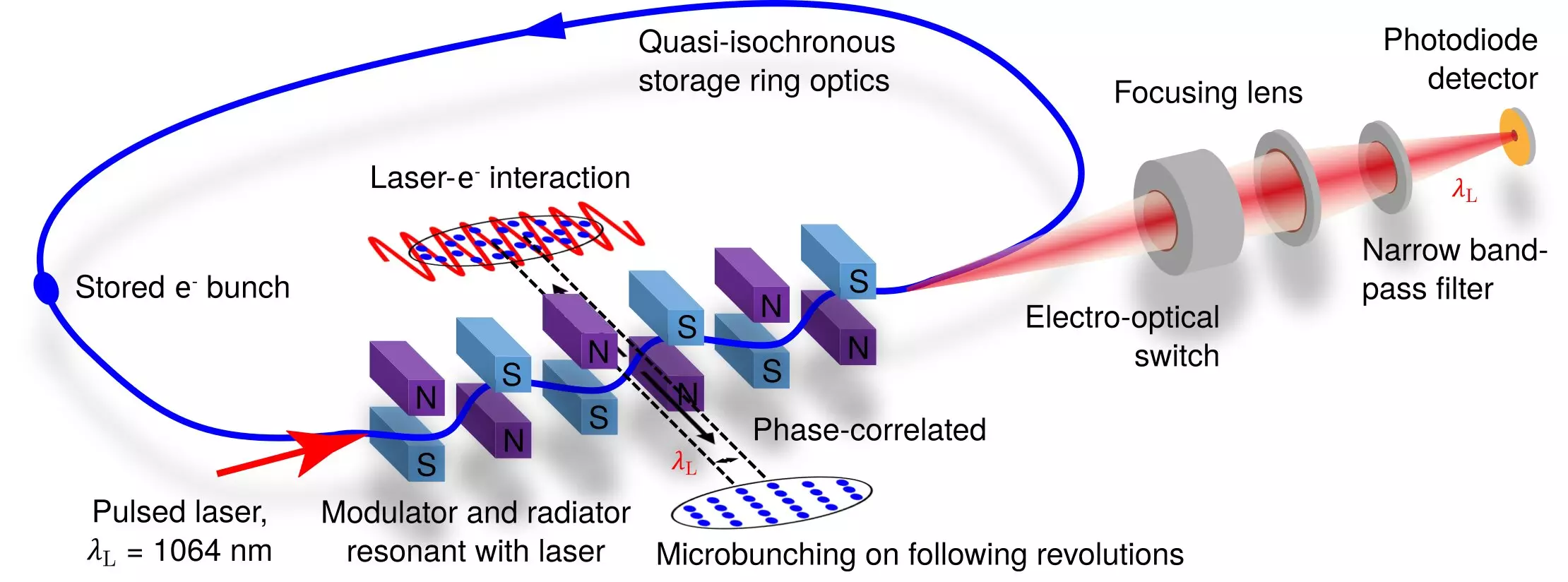When ultrafast electrons are manipulated in storage rings, they produce synchrotron radiation, emitting light that is longitudinally incoherent and consists of a broad spectrum of wavelengths. This type of light is commonly used in materials research due to its high brilliance. Monochromators can extract individual wavelengths from this spectrum, but at the cost of significantly reducing the radiant power to just a few watts. The real question arises – what if storage rings could produce monochromatic, coherent light with outputs in the kilowatts, similar to a high-power laser?
Physicist Alexander Chao and his doctoral student Daniel Ratner found an answer to this challenge in 2010. By shortening the electron bunches in a storage ring to be smaller than the wavelength of the emitted light, the resulting radiation becomes coherent. This coherence leads to a significant increase in power output, making it millions of times more powerful than traditional methods. Unlike the traditional bunches with a length of about a centimeter and distance of around 60 centimeters, the proposed micro-bunches are one micrometer long.
Chinese theorist Xiujie Deng has developed settings for a specific type of circular accelerator called isochrone or “low-alpha” rings for the Steady-State Micro-Bunching project (SSMB). Through interactions with a laser, short particle bunches of only one micrometer can be created. A collaborative research effort between HZB, Tsinghua University, and PTB has successfully demonstrated this concept in a proof-of-principle experiment conducted in 2021 at the Metrology Light Source (MLS) in Adlershof. This experiment validated Deng’s theory for generating micro-bunches, showing promising results for the future of SSMB radiation sources.
Despite these advancements, HZB project manager Jörg Feikes cautions that significant time and effort are still needed before this technology can be fully realized. Drawing parallels to the development of free-electron lasers, which also required years of experimentation and development, Feikes emphasizes the long-term nature of such ambitious projects. The transformation of initial concepts into practical applications often involves extensive research and refinement, as seen in the case of kilometer-long superconducting accelerators for free-electron lasers.
The shift towards producing coherent light in storage rings marks a significant advancement in materials research and opens up new possibilities for high-power applications. The innovative techniques and theories developed by researchers worldwide promise a bright future for the field of accelerator science and technology.


Leave a Reply